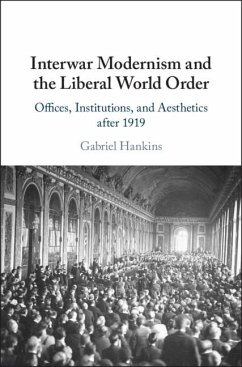What was the modernist response to the global crisis of liberal world order after 1919? This book tells the story of the origins of liberal world governance in Cambridge modernist circles, the literary response to the Versailles Peace of 1919, and the contestation of that institutional moment across a range of world literary modernities. Challenging standard accounts of reactionary postwar politics, Interwar Modernism and the Liberal World Order articulates a modernism animated by the contradictions of liberal governance between the wars. The book develops a new materialist reading of modernist politics hinged on the official figures that traverse both modernist texts and liberal order. This official liberal world shapes interwar arts and letters from wartime Cambridge to revolutionary Shanghai.
Dieser Download kann aus rechtlichen Gründen nur mit Rechnungsadresse in A, B, BG, CY, CZ, D, DK, EW, E, FIN, F, GR, HR, H, IRL, I, LT, L, LR, M, NL, PL, P, R, S, SLO, SK ausgeliefert werden.


